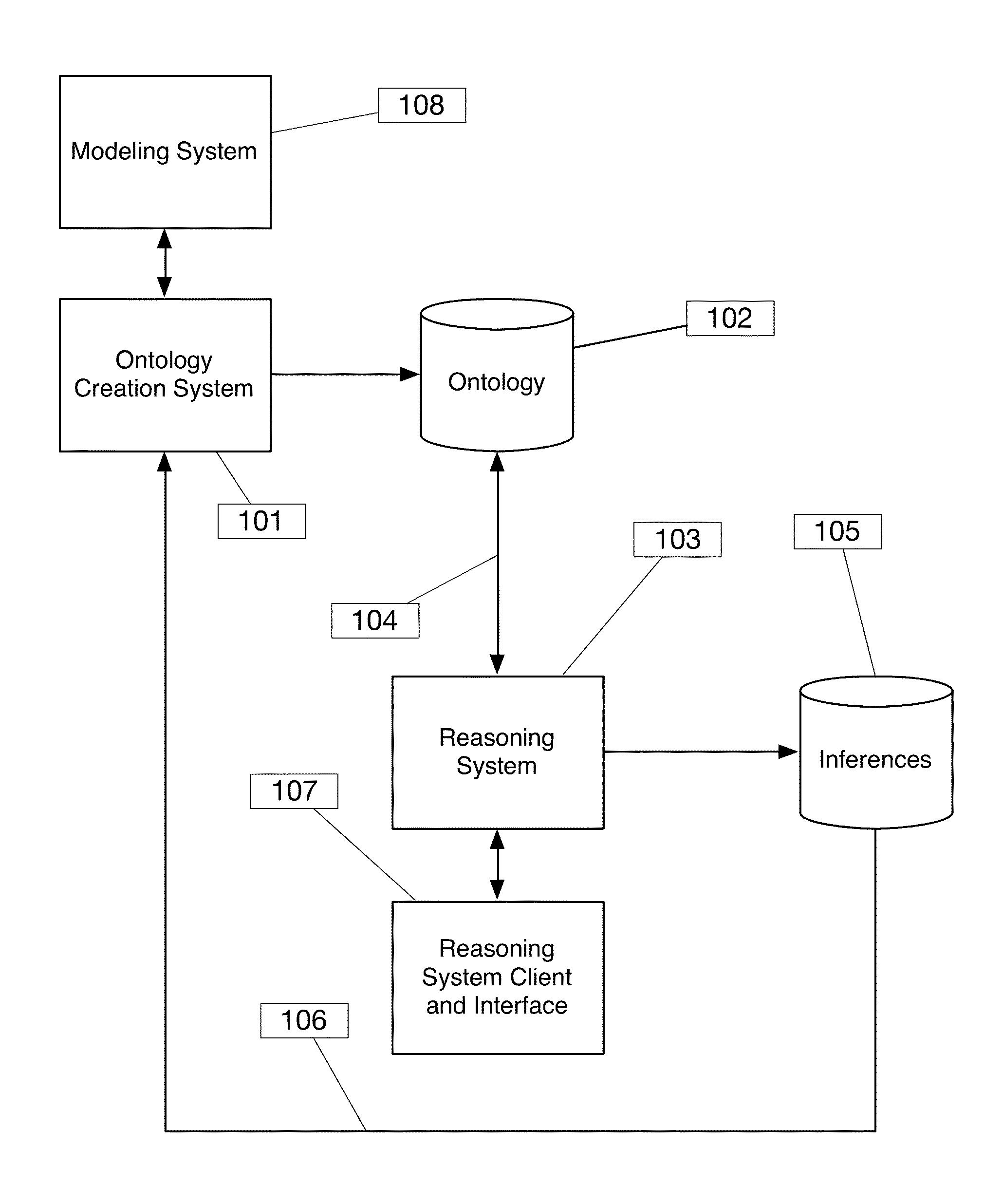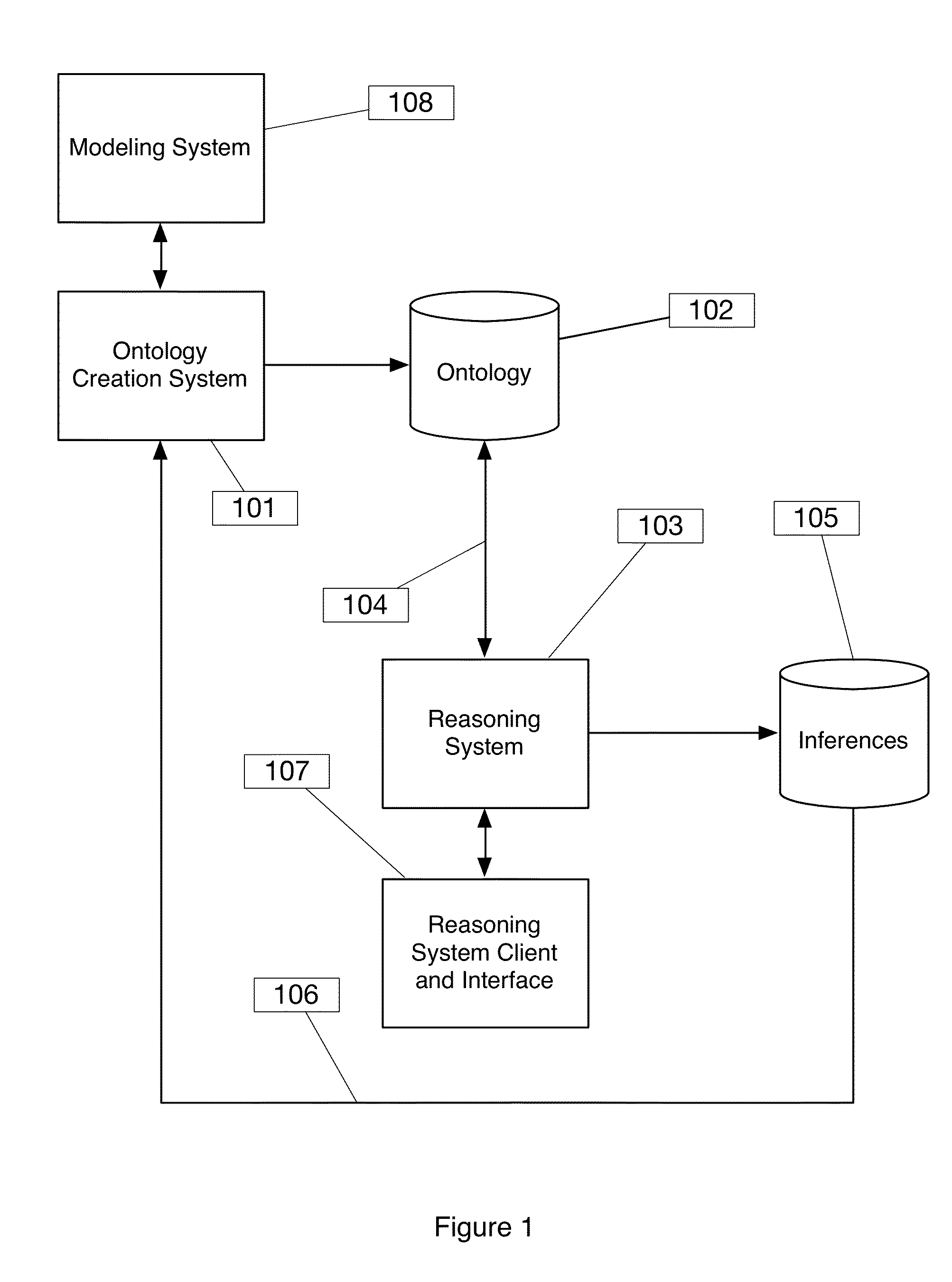System and method for ontology derivation
a reasoning system and ontology technology, applied in the field of ontology of reasoning systems, can solve the problems of many reasoning systems, elements that have ontological weight, and the meaning of a fact or inference can change,
- Summary
- Abstract
- Description
- Claims
- Application Information
AI Technical Summary
Benefits of technology
Problems solved by technology
Method used
Image
Examples
example 4
[0385 illustrates how the resolution of that tension contributes further to the story's forward-directed inferences, supporting the emergence of tentative agent networks, including aspects that are incompatible and unexpected. In this example, the previously built structures combine to resolve ontological conflict.
[0386]Non-explicit bridging concepts are formed, some of which participate in contrary agent networks. This creates a combination of expected and unexpected structure, which provokes the need for more information from the text, in order to know how the multiple tentative possible outcomes are resolved.
[0387]FIG. 17 illustrates example 4, which begins with a local resolution of conceptual conflict. In the traditional “Red Riding Hood” story, the word ‘wolf’ is associated with menacing qualities. On the other hand, the text asserts that he is kind and sensitive. Further inferential structure is needed in order to reconcile these two notions.
[0388]The animation commences when...
PUM
 Login to View More
Login to View More Abstract
Description
Claims
Application Information
 Login to View More
Login to View More - R&D
- Intellectual Property
- Life Sciences
- Materials
- Tech Scout
- Unparalleled Data Quality
- Higher Quality Content
- 60% Fewer Hallucinations
Browse by: Latest US Patents, China's latest patents, Technical Efficacy Thesaurus, Application Domain, Technology Topic, Popular Technical Reports.
© 2025 PatSnap. All rights reserved.Legal|Privacy policy|Modern Slavery Act Transparency Statement|Sitemap|About US| Contact US: help@patsnap.com



